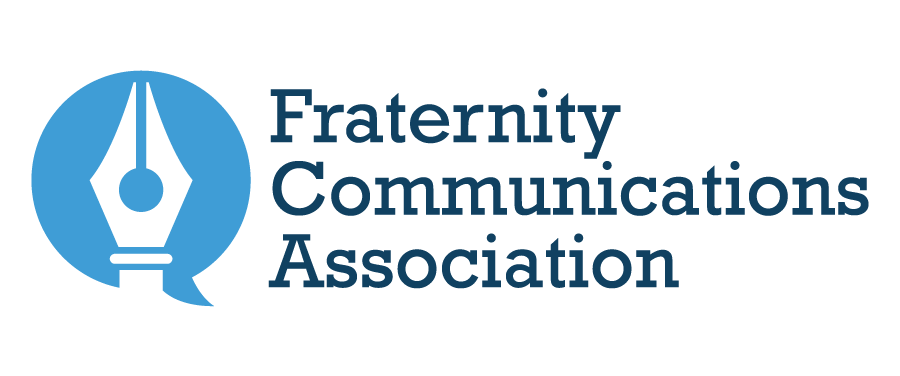Post-Pandemic Potential Risks and Implications: July 2021 Brown Bag
CEO and Managing Partner for Dyad Strategies Dr. Gentry McCreary shared potential risk areas and implications as sorority and fraternity members transition to a post-pandemic college campus during the July FCA Brown Bag.
McCreary began the conversation by introducing Dyad Strategies and how Dyad supports NIC member organizations, NPC member organizations and hundreds of campuses with research, education and training. Dyad Strategies provides many other services for higher education organizations. According to dyadstrategies.com, Dyad helps organizations and universities measure and improve the impact of their work. Dyad Strategies is an intellectual powerhouse of higher education professionals who deliver a wide range of consulting services for schools, universities, and organizations. We’ve got the necessary tools and expertise to help you measure and improve in meaningful ways. Find out about our organization, mission, our process, and the results of our decades of advocacy.
Dyad conducted a research study from 2016–2021 with 12 fraternities and five sororities at over 400 campuses. For this specific conversation, McCreary shared the data found from fall 2020 to spring 2021. On average, the study had a 40–80% completion rate.
McCreary shared four unexpected trends Dyad found throughout this study as well as trends that higher education professionals need to know prior to the fall 2021 semester. These four trends were unforeseen and could have long-term implications on fraternity/sorority life and higher education.
Trend One: Binge Drinking
The first trend showcased that binge drinking is on the rise with fraternity men but not with sorority women. Prior to 2020, binge drinking had been on the decline, and Gen Z students tend to drink less than previous generations. However, Dyad’s research showed a significant increase for binge drinking in fall 2020 with a continued rise through spring 2021. McCreary then dove deeper into the data to show binge drinking is trending down for those who identify as straight, while binge drinking is trending up significantly for those who identify as a part of the LGBTQIA community. According to McCreary, one theory may be students who had to live at home using alcohol as a coping mechanism to deal election stress or with family members who do not accept their identities. He shared a question for attendees to ponder about this data: how are higher education professionals targeting and supporting marginalized individuals with this information?
Trend Two: “Always Joiners”
The second trend showed a significant increase in “always joiners.” This means the data displayed a significant increase in those who knew they wanted to join a fraternity or sorority before they even began school. This largest spike was seen with mid-size regional campuses and small private campuses, while larger campuses remained stagnant.
Trend Three: Hazing
The third trend displayed a spike in social dominance hazing motivation. McCreary shared that both fraternity and sorority members showed an increase in the importance of creating social hierarchy and power over new members, specifically during the new member period. One theory supposed that due to shutdowns, members were not able to gather in large groups to host events and create cultural norms, causing more motivation to get back to “normal.”
Trend Four: Social Status
The fourth and final trend discussed a spike in the importance of social status for a student’s chapter or organization. The data showed that members care significantly more about and place more importance on their chapter’s campus hierarchy. This has normally been more common among sorority women, but the largest spike in this measure was from fraternity men throughout the 2020–2021 school year.
McCreary stated that these trends are a recipe for disaster for this fall and for the long-term health of fraternity/sorority life and higher education. The coronavirus pandemic is a clear catalyst for these trends, and now that collegiate members are returning to campuses across the country, these trends foreshadow some important risk areas for all higher education organizations to understand.
Wrap-Up Thoughts and Conclusions
Trend One: Binge Drinking
How are we creating safe spaces and opportunities for support, education and recovery from alcohol and drug dependency within our organizations?
Are we creating comfortable spaces for open, honest conversation about dependency and recovery?
How can we create this space? What campus resources are available to help create these spaces?
Trend Two: “Always Joiners”
We could see an influx of upperclassmen going through recruitment who did not join due to the pandemic.
There could be a spike in maybe or never joiners. How will we create a welcoming environment for those who do not know if they want to join a fraternity or a sorority prior to being on campus?
How do DEI conversations overlap with conversations about the recruitment structure?
Trend Three: Hazing
It is important to break the cycle of showing social dominance early.
Address the power differential. Identify and educate about power and social dominance.
Moral Foundations Theory
Trend Four: Social Status
Examine systems and structures that promote social tier systems such as recruitment and housing. Are there others?
For more conversation about these trends and much more, check out Dyad’s podcast here.



